Mediterranean Beverages: Basic Overview
Common Ingredients
Common Preparing Methods
Key Taste
Drinking Etiquette
Culinary Festivals
Influence and Fusion
Mediterranean Beverages: Origin and Region
Cuisine
Cuisine’s Regions
Classifications of Mediterranean Beverages
-
Alcoholic Beverages
Mediterranean alcoholic beverages range from grape wines to spirits distilled from fruits and herbs.
These drinks are often enjoyed in social settings, celebrations, and as part of daily meals.
They represent the Mediterranean’s warm hospitality and love for communal dining.
-
Non-alcoholic Beverages
Non-alcoholic beverages in Mediterranean cuisine are characterized by their refreshing and health-oriented nature.
These include a variety of fruit juices made from the region’s abundant produce, traditional teas and coffees, and herbal infusions.
Mediterranean beverages are drinks commonly enjoyed in the Mediterranean. This region covers Southern Europe, North Africa, and parts of Western Asia.
Since the Mediterranean is a melting pot of cultures, local beverages draw culinary influences from the Asian drink collection, African drinks assortment, and drinks of Europe.
Mediterranean beverages are characterized by the predominance of certain ingredients like grapes (for wine), various herbs, and fresh fruits. Therefore, these drinks are aromatic and refreshing.
Common beverage types include wines, which are central to Mediterranean dining culture, especially in countries like Italy, Spain, and Greece.
Herbal teas, such as mint tea, are well-known in North African countries like Morocco. Coffee also plays a significant role, particularly in countries like Italy and Turkey.
Fermentation is notable in wine production, while brewing and steeping are common for teas and coffees.
Apart from exploring the most popular Mediterranean beverages, I also delve into the traditional drinking culture, its global appeal, and the beverage traits found in each Mediterranean region.
Moreover, I uncover how beverages play a significant role in the cultural and social rituals of the Mediterranean, along with the region’s preferences for alcoholic and non-alcoholic drinks.
You’ll find out which countries top the charts in alcohol and beer consumption and which ones are renowned for their coffee and tea.
Lastly, I’ll guide you through the art of pairing dishes with beverages, offering tips on what to sip and skip when following a Mediterranean diet.
Let’s get started now!
35 Best European Mediterranean with Filters
Here are the top 35 Mediterranean drinks sorted according to their popularity. This guide lets you easily find what you’re looking for by filtering based on popularity, ingredients, flavor profile, and preparation method.
Plus, you can narrow your search to traditional, national, fusion, exotic, or street-style drinks.
Hibiscus tea, or Karkade, is a common street beverage in parts of North Africa, especially Egypt, appreciated for its cooling, cranberry-like flavor on hot days.
These exotic drinks offer a taste of the region’s diverse flora and culinary creativity, providing a sensory experience that stands out for their distinct taste profiles and vibrant colors.
Limonana, a blend of lemon and mint, represents a modern fusion within Mediterranean drinks, merging traditional flavors into a refreshing lemonade, popular as a cooling summer treat.
Wine
- Alcoholic
- National
- Traditional
Wine is a key part of Mediterranean cuisine. It offers a wide spectrum of flavors, from the rich and robust to the light and fruity.
This alcoholic drink is derived from fermented grapes. Its flavor varies greatly depending on the grape variety, the region where it’s produced, and the winemaking techniques employed.
Popular varieties include Cabernet Sauvignon, Merlot, Chardonnay, and Sauvignon Blanc, as well as sparkling wines like Champagne and Prosecco. Wine is particularly integral to the cultures of France, Italy, and Spain.
Beer
- Alcoholic
- National
- Traditional
Beer is a popular alcoholic beverage worldwide and has a special place in the Mediterranean. It is made by fermenting starches (ideally malted barley) and flavored with hops for bitterness and aroma.
Beer comes in many styles, including the light pilsner, the rich stout, and the fruity Belgian ale. While not as central to Mediterranean traditions as wine, beer still has a significant presence, especially in Spain, Italy, Greece, and Lebanon.
Key types of beer include crisp lager, ale with its diverse flavors, and IPA (India pale ale) with its strong hoppy taste and higher alcohol content.
Espresso
- Non-Alcoholic
- National
- Street Beverages
- Traditional
Espresso is a highly concentrated coffee that stands as a cornerstone of Italian and Mediterranean coffee culture. It is known for its bold, rich flavor, creamy texture, and a layer of crema on top.
Traditionally served in small amounts, espresso can be enjoyed on its own or as a base for other coffee drinks. Variations include the Ristretto (a shorter, more concentrated espresso) and the Lungo (a longer, slightly milder version).
This beverage is not just popular in Italy; it is also a staple in coffeehouses worldwide. Drinking espresso is a ritual, an art form, and, for many in the Mediterranean, an indispensable part of daily life.
Cappuccino
- Non-Alcoholic
- National
- Street Beverages
- Traditional
Cappuccino is an Italian coffee beverage made by mixing equal parts espresso, steamed milk, and frothed milk. Its main appeal includes the light, airy texture, rich coffee, and creamy milk balance.
The taste can vary from sweet to robust, depending on the espresso used and adding sugar or cocoa powder on top.
The flavored cappuccino is a tasty variation that has syrups like vanilla or caramel. Meanwhile, the “wet” or “dry” cappuccino refers to the amount of milk versus foam.
Cappuccinos have a special place in coffee culture around the Mediterranean and have become a beloved part of coffee rituals globally. Typically associated with breakfast in Italy, this beverage symbolizes leisurely mornings and moments of indulgence.
Fruit Juice
- Non-Alcoholic
- Street Beverages
- Traditional
Fruit juice in Mediterranean cuisine is either extracted from a single fruit type or a blend of many different varieties. As a traditional beverage, it’s cherished for its natural sweetness and flavor diversity.
Famous variations include citrus blends, pomegranate juice, and watermelon juice. Their flavors range from tangy to sweet.
Fruit juice is popular across the Mediterranean, especially in countries like Spain, Italy, and Greece. It’s a staple in daily and festive meals.
Herbal Tea
- Non-Alcoholic
- Traditional
Herbal tea, also known as tisane in some regions, is a popular infusion with soothing and aromatic qualities in the Mediterranean. It is made from various herbs’ leaves, flowers, or roots.
Renowned variations include mint tea, chamomile, and sage tea. Countries like Morocco and Egypt are particularly famous in the Mediterranean for their herbal tea cultures.
Herbal tea is enjoyed daily and plays a significant role in social rituals and gatherings.
Chamomile Tea
- Non-Alcoholic
- Traditional
Chamomile tea is a Mediterranean herbal infusion made from the dried flowers of the chamomile plant. This tea is known for its gentle, floral flavor and calming properties.
The taste of chamomile tea can be described as subtly sweet and earthy, with a light, apple-like aroma. Many people consume this tea for its ability to promote relaxation and sleep.
Hibiscus Tea
- Non-Alcoholic
- Traditional
Hibiscus tea, also known as karkade, is a popular Mediterranean beverage made from the dried petals of the hibiscus flower. This deep-red, slightly tart drink can be enjoyed both hot and cold, offering a refreshing sweet and tangy flavor similar to cranberries.
Hibiscus tea is available in the cuisine of several Mediterranean countries, particularly in Egypt and parts of North Africa. It is often served as a cooling street beverage or in homes, particularly during hot weather.
Hibiscus tea is popular not only in Mediterranean regions but also across Africa, the Caribbean, and Latin America.
Maghrebi Mint Tea
- Non-Alcoholic
- National
- Traditional
Maghrebi mint tea (or Moroccan mint tea) is a traditional Mediterranean beverage hailing from the Maghreb region. It is a staple in Morocco, Algeria, Tunisia, and Libya.
This tea is characterized by its refreshing and aromatic nature, primarily due to the inclusion of fresh mint leaves. Locals often sweeten it with sugar and serve with ice.
Champagne
- Alcoholic
- National
- Traditional
Champagne is a sparkling wine that originates from the Champagne region in France. Known for its association with celebrations, this fuzzy alcoholic beverage is often seen as a symbol of luxury and special occasions.
Its taste profile ranges from dry (brut) to sweet (doux), with citrus, white peach, or almond flavor. Notable variations include Blanc de Blancs, made exclusively from Chardonnay grapes, and Blanc de Noirs, produced from Pinot Noir and Pinot Meunier grapes.
Beyond the Mediterranean, Champagne is a global celebration icon, from New Year’s Eve to weddings.
Sangria
- Alcoholic
- National
- Street Beverages
- Traditional
Sangria is a refreshing and fruity beverage hailing from Spain and Portugal. This traditional drink is a blend of red wine, chopped fruit, a sweetener, and a small amount of brandy.
The taste of sangria can vary widely depending on the recipe. It is typically characterized by its sweet and tangy profile, with common fruit additions like oranges, lemons, and berries.
The white wine-based sangria blanco and rosé-based sangria rosada are other popular variations.
Sangria enjoys popularity across the Mediterranean and has found a fond place in many other parts of the world, especially during summer. It’s a staple at festive gatherings and casual celebrations.
Red Wine
- Alcoholic
- National
- Traditional
Red wine is a traditional Mediterranean beverage made by fermenting the juice of dark-colored grape varieties. Its flavor varies from light and fruity to rich and full-bodied, depending on the grape variety and winemaking process.
Varieties like Cabernet Sauvignon, Merlot, and Pinot Noir are among the famous types. Red wine is a staple in Italy, France, and Spain.
Red wine often graces dinner tables and is even a key ingredient in various Mediterranean dishes.
Port Wine
- Alcoholic
- National
- Traditional
Port wine, also known as vinho do porto, is a fortified wine originating in the Douro Valley of northern Portugal. This sweet, rich beverage is typically enjoyed as a dessert wine
Notable port wine varieties are ruby, tawny, and vintage. Ruby port is fresh and berry-like, while tawny is smoother and nuttier due to aging in wooden barrels.
Vintage port is full-bodied and made from the best grapes of a single year. All three varieties are famous in Mediterranean countries and appreciated worldwide, often serving as an elegant conclusion to a meal.
Limoncello
- Alcoholic
- Street Beverages
- Traditional
Limoncello, or lemon liqueur, is Italy’s vibrant and zesty beverage. This traditional Italian digestif is crafted from the zest of fresh lemons, steeped in alcohol, and then sweetened with sugar syrup.
Flavorwise, limoncello delivers a sweet and bright, citrusy taste. Italians usually chill it to serve as an after-dinner drink.
While limoncello is most closely associated with the Amalfi Coast and Sorrento, its popularity has spread across the Mediterranean and worldwide.
Limoncello also finds its way into various cocktails and culinary recipes, adding lemony goodness. It is often homemade in Italy and given as a gift during festive occasions.
Grappa
- Alcoholic
- Traditional
Grappa is a potent Italian spirit made by distilling the pomace, which refers to the leftover skins, pulp, and seeds from winemaking.
This traditional beverage boasts a robust and fiery taste. Its flavors vary widely depending on the grapes used and the specifics of the distillation process. Grappa can range from smooth and aromatic to strong and bold.
Famous variations include grappa di Barolo, made from Nebbiolo pomace, and grappa di Moscato, which is more aromatic due to the fragrant Moscato grapes.
Grappa is particularly popular in the northern regions of Italy, like Piedmont and Veneto. It is often sipped as a digestif after meals; some people even use it in the Italian custom of “caffè corretto,” adding grappa to espresso.
Schnapps
- Alcoholic
- National
- Street Beverages
- Traditional
Schnapps refers to a broad category of traditional distilled spirits in the Mediterranean and many other European countries.
This clear spirit is known for its potency and is often infused with various fruits, herbs, or spices. Therefore, schnapps boasts diverse flavors, from sweet and fruity to sharp and herbal.
Some well-known variations include sweet, fruity peach schnapps and cooling, refreshing peppermint schnapps.
Rakija
- Alcoholic
- National
- Traditional
Rakija, also known as rakia or raki in different regions, is a traditional fruit brandy highly popular in the Mediterranean and the Balkans, a region closely tied to Mediterranean cultural influences.
Rakija is made by fermenting and distilling various fruits. Plum (Šljivovica), grape (Lozovača), and apricot (Kajsijevača) are among the most popular flavors.
The strong, smooth taste and a delicious warmth that lingers after each sip are the defining features of rakija.
The production of rakija is often a family tradition that passed down through generations. This traditional beverage plays a central role in social and cultural rituals, including Christmas, Easter, weddings, and harvest festivals.
Pelinkovac
- Alcoholic
- National
- Traditional
Pelinkovac is a traditional herbal liqueur from the Balkans. It is renowned for its distinctive bitter flavor derived from wormwood (Artemisia absinthium).
This beverage is often enjoyed as a digestive and is commonly served as an aperitif to stimulate the appetite before meals.
The taste of pelinkovac is complex, with a base bitterness complemented by aromatic herbs and spices. Many people regard it as an acquired taste.
While variations exist, including those with added citrus or honey to soften the bitterness, the classic pelinkovac remains a favorite in countries like Croatia, Serbia, and Montenegro.
Zivania
- Alcoholic
- National
- Traditional
Zivania is a traditional Cypriot spirit made from the distillation of grape pomace and local wine. This clear, strong beverage has a high alcohol content that amounts from 40% to 99% alcohol by volume.
Zivania’s taste is clean and potent, with subtle hints of the grapes used in its production. It’s often served chilled as an after-dinner digestif.
People in Cyprus also use zivania in cooking or as a traditional remedy for colds and muscle aches. This spirit is celebrated in various local festivals across Cyprus, particularly during grape harvest season.
Rakı
- Alcoholic
- National
- Traditional
Rakı is an anise-flavored twice-distilled grape pomace popular in Turkey and other neighboring countries. It is also known as lion’s milk due to its milky and cloudy appearance when mixed with water.
This anise-flavored drink has a distinctive taste ranging from sweet to slightly bitter. In Turkey, rakı is typically consumed during leisurely dinners known as “rakı sofrası,” accompanied by a variety of meze (small dishes).
From Turkey, rakı has spread to various Balkan countries and among the Turkish diaspora worldwide.
Arak
- Alcoholic
- National
- Traditional
Arak is a traditional Eastern Mediterranean spirit originating in the Levant region. It is similar to rakı in its anise-flavored profile.
Locals often enjoy arak with meze. The taste of arak can vary from sweet to rich and potent, depending on the distillation process and the addition of anise.
Renowned for its strong flavor, this spirit is prevalent during social gatherings and celebrations, notably in Lebanon, Syria, and Palestine.
Pastis
- Alcoholic
- Traditional
Pastis is a refreshing anise-flavored spirit from France, particularly beloved in the south. It is often associated with leisure and the relaxed pace of life in Provence.
The standard way to enjoy pastis is to dilute it with water before drinking, turning it from a clear to a milky opacity.
The taste is predominantly licorice-like due to the anise, but it also carries subtle hints of other herbs and spices. Pastis is commonly enjoyed in cafes and during pétanque games on warm summer days.
There are variations in the sweetness levels and the complexity of herbal notes among different brands. Household names include Ricard and Pernod.
Absinthe
- Alcoholic
- Exotic
- Traditional
Absinthe, also known as the “green fairy,” is a potent spirit in several Mediterranean countries. It originated in Switzerland but became famously associated with the bohemian culture of late 19th and early 20th century France.
Absinthe is made from various botanicals, such as wormwood, green anise, and fennel. Its main characteristics include the complex herbal taste and green color.
Absinthe is a strong spirit; people often add water and sugar cubes when enjoying it. The spirit’s rich history and cultural mystique have made it a fascinating subject of artistic and literary works.
Ouzo
- Alcoholic
- National
- Traditional
Ouzo is a traditional Greek beverage renowned for its strong anise flavor. This clear spirit turns milky white when water or ice is added, a phenomenon known as the “ouzo effect.”
Ouzo is often enjoyed as an aperitif and accompanies meze dishes. There are various types of ouzo with different strengths and sweetness levels, but the most notable variations come from Lesbos and Chios.
Popular primarily in Greece, ouzo has also found appreciation in Cyprus and among Greek communities worldwide.
Sambuca
- Alcoholic
- Traditional
Sambuca is an Italian anise-flavored liqueur. It’s traditionally served neat with a few coffee beans, known as “con la mosca,” which means “with the fly.”
Sambuca’s taste is predominantly sweet and licorice-like, owing to the essential oils of star anise. Adding the coffee beans is not only for flavor but also as a visual embellishment.
The most common sambuca varieties include red (sambuca rosso) and black (sambuca nero). Italians often consume sambuca as a digestif after meals.
Anisette
- Alcoholic
- Traditional
Anisette is a sweet, anise-flavored liqueur traditionally enjoyed in Mediterranean countries, particularly Spain, Italy, and France.
The flavor of anisette comes from anise seeds, giving it a strong licorice taste. In this aspect, it is similar to ouzo and sambuca but sweeter and less alcoholic.
Anisette is often consumed neat or diluted with water. It’s also mixed into coffee or served over ice as a refreshing drink or digestif in some regions.
Turkish Coffee
- Non-Alcoholic
- Street Beverages
- Traditional
Turkish coffee is a traditional Turkish beverage known for its unique preparation method. Finely ground coffee is simmered in water, often with sugar, and served in a small cup where the grounds are allowed to settle.
This method imparts a robust and bold flavor that is essential to the Turkish coffee experience. According to the amount of added sugar, the coffee can be ‘sade’ (unsweetened), ‘az şekerli’ (little sugar), ‘orta’ (medium sugar), or ‘şekerli’ (sweet).
Turkish coffee is famous in Turkey and other parts of the Mediterranean, the Middle East, and Eastern Europe. Locals widely consume it as a beverage for hospitality and socializing.
Turkish coffee also plays a key role in various cultural rituals such as Eid, including engagement ceremonies and fortune-telling traditions.
Turkish Tea
- Non-Alcoholic
- Street Beverages
- Traditional
Turkish tea, known as çay in Turkey, is an integral part of Turkish culture and one of the nation’s most consumed beverages. It is traditionally brewed using a double teapot called a “çaydanlık.”
Robust and full-flavored Turkish tea is served in small tulip-shaped glasses that showcase its deep amber hue. Turkish people consume tea at all times of the day in various settings, such as in homes, tea gardens, and cafes.
Turkish tea is also popular in neighboring countries and among Turkish diaspora communities around the world. More than a mere beverage, this tea is also a cultural ritual.
Limonana
- Non-Alcoholic
- Fusion
- Traditional
Limonana, a portmanteau of the Hebrew words for lemon (‘limon’) and mint (‘nana’), is a refreshing mint lemonade in the Levantine region of the Mediterranean. As a fusion beverage, it combines the tartness of lemon juice with the cool freshness of mint.
Traditional limonana is a simple mix of lemon juice, mint, and sugar. Meanwhile, frozen limonana is more like a slushie and is immensely popular during summer.
A common sight during the warm months, limonana is a common fixture at outdoor markets, beachfront, and cafes.
Ayran
- Non-Alcoholic
- National
- Street Beverages
- Traditional
Ayran is a traditional savory beverage in many Mediterranean and Middle Eastern countries. This famous drink blends yogurt, water, and salt, creating a salty, tangy, and cooling flavor.
Ayran is often consumed alongside meals, particularly grilled meats and rice dishes. Many recipes feature mint or cucumbers to enhance their refreshing qualities.
Turkey considers ayran one of its national drinks. This yogurt-based beverage is also widely enjoyed in Greece, Iran, the Levant, and Central Asia.
Ayran is mainly associated with Ramadan, where it serves as a soothing drink to break the fast, as well as many festive occasions and family gatherings.
Kinnie
- Non-Alcoholic
- National
- Traditional
Kinnie is a Maltese bittersweet soft drink made from bitter oranges and aromatic herbs. Launched in 1952, Kinnie is a fusion beverage that combines the traditional flavors of the Mediterranean with a modern twist.
Once you drink Kinnie, the initial sweetness quickly gives way to a bitter and herbaceous aftertaste, making it an acquired taste for some. Kinnie is available in a few variations, including a diet version and the lighter Kinnie Zest.
Boza
- Non-Alcoholic
- Traditional
Boza, also known historically as Braga in some regions, is a traditional fermented beverage that holds a special place in the culinary heritage of several Mediterranean and Eastern European countries.
Boza is made from various grains, including millet, maize, wheat, or barley. It is characterized by its slightly tart and tangy flavor and thick, smooth consistency.
Boza is particularly popular in Turkey, Bulgaria, North Macedonia, and Albania. It is often associated with winter months.
Cedevita
- Non-Alcoholic
- National
- Traditional
Cedevita is a distinct beverage from Croatia with a vibrant, citrusy taste. It is a powdered vitamin drink mixed with water to create a refreshing, fizzy beverage.
From its homeland, Cedevita has become a staple in many households throughout the Mediterranean and Southeast Europe. It is available in various fruit flavors, such as oranges, lemons, and grapefruits.
Brandy Sour
- Alcoholic
- National
- Traditional
Brandy sour is a traditional Cypriot cocktail often regarded as Cyprus’s national drink. This refreshing beverage combines Cyprus brandy, lemon squash or lemonade, and a dash of Angostura bitters, plus a slice of lemon and a cherry for garnish.
The taste balances the brandy’s warmth with the citrus tang of lemon, creating a pleasantly sweet and sour experience. Locals love sipping it during the hot summer.
Mirto
- Alcoholic
- Traditional
Mirto is an aromatic Sardinian liqueur made from the myrtle plant. There are two main varieties: Mirto Rosso (red), made from the berries, and Mirto Bianco (white), made from the leaves.
Mirto has a rich flavor with sweet yet slightly bitter notes and is often consumed as a digestif after meals. Its popularity extends beyond Sardinia to other parts of Italy and the Mediterranean.
List of Mediterranean Beverages
What Are The Characteristics of Beverages Across Mediterranean Regions?
Below is a brief overview of the critical features of Mediterranean beverages by region:
These distinctive beverages play a central role in social and cultural practices, serving not just as refreshments but as symbols of hospitality and community.
What Are The Roles of Beverages in Mediterranean Cultural and Social Practices?
In the Mediterranean, beverages like wine, coffee, and tea are central to the culture, playing a pivotal role in social life and traditions.
During celebrations and ceremonies, beverages gain particular significance. Wine toasts at weddings and gatherings express goodwill, while specific drinks during festivals and religious events highlight their cultural and spiritual importance.
Understanding these social roles helps us appreciate the varied alcoholic preferences that have developed in the region.
What Are Alcoholic Preferences in the Mediterranean?
Alcoholic preferences in the Mediterranean region are varied and deeply intertwined with the area’s history, culture, and geographical features. Here is a concise summary:
Examining these preferences further reveals interesting patterns in alcohol consumption across different Mediterranean countries.
Which Mediterranean Countries Drink the Most Alcohol?
Spain, Portugal, and Greece appear to be significant consumers of alcohol based on available data from the World Population Review for 2019. Spain’s alcohol consumption is notable, with individuals consuming an average of 12.67 liters of pure alcohol per year.
In contrast, Greece and Portugal also show significant consumption levels, with Greece at 10.50 liters and Portugal at 12.09 liters per year.
Source: World Population Review, 2019
Source: Eurostat Statistics, 2019
Furthermore, the drinking habits in these countries reveal exciting patterns. Eurostat Statistics Explained states that Portugal stands out with a high share of daily drinkers, reaching 20.7% of the population. Italy and Spain also have a notable percentage of everyday alcohol consumers, exceeding 12%.
These patterns indicate a cultural inclination towards regular, albeit moderate, alcohol consumption, often associated with meals.
While wine and spirits dominate in some areas, beer consumption is also significant in certain Mediterranean countries, highlighting diversity in drinking preferences.
Which Mediterranean Countries Drink the Most Beer?
Source: World Population Review, 2021
Regarding beer consumption among Mediterranean countries, Spain leads the way with a significant amount of beer consumed annually. According to the World Population Review Spain’s total beer consumption stood at 3,856 thousand kiloliters.
Following Spain, Portugal also has a notable beer consumption rate, with per capita consumption recorded at 52.29 liters. Greece, another Mediterranean country, shows a lower consumption level than Spain and Portugal, with a total of 314 thousand kiloliters.
Contrastingly, other nations in the region maintain a strong tradition of wine consumption, underscoring the historical significance of vineyards and winemaking.
Which Mediterranean Countries Drink the Most Wine?
In terms of wine consumption among Mediterranean countries, Portugal leads the way with an impressive per capita consumption. According to data from World Population Review for 2020:
Source: World Population Review, 2020
Aside from wine, there’s a wide array of non-alcoholic drinks that are equally savored across the Mediterranean, reflecting the region’s diverse tastes and lifestyles.
What Are Non-alcoholic Preferences in the Mediterranean?
In the Mediterranean region, non-alcoholic beverages are a reflection of its rich history, lifestyle, and natural abundance, offering a diverse array of flavors and traditions.
Among these non-alcoholic options, coffee stands out, especially in countries known for their special brewing methods and strong coffee culture.
Which Mediterranean Countries Have the Best Coffee?
The following countries of the Mediterranean stand out for their distinctive coffee traditions and contributions to global coffee culture:
While coffee holds a special place in many Mediterranean hearts, tea also plays a crucial role in the daily life and hospitality traditions of some countries in this region.
Which Mediterranean Countries Have the Best Tea?
Tea culture in Mediterranean countries is diverse, reflecting centuries of tradition, cultural exchanges, and unique preferences, contributing to the global tapestry of tea traditions.
The rich tapestry of Mediterranean beverages, be it tea, coffee, or others, pairs wonderfully with the region’s diverse cuisine, enhancing the dining experience.
Which Dishes Best Pair with Mediterranean Beverages?
Mediterranean beverages, known for their diverse range, including wines, aperitifs, and non-alcoholic options, pair well with the region’s cuisine, characterized by its use of fresh herbs, vegetables, and seafood. Here are some pairing suggestions:
When pairing signature Mediterranean delicacies with beverages, consider the balance of flavors, acidity, and sweetness to ensure they complement each other.
In the next part, let’s uncover which drinks to enjoy and which to limit when adopting a Mediterranean diet.
What to Drink and Not to Drink on a Mediterranean Diet?
Here is the summary about what you can and cannot drink when following a Mediterranean diet:
- Alcoholic: Red wine (limited consumption, ideally with meals due to its antioxidant properties).
- Non-Alcoholic
- Water (main beverage, essential for hydration).
- Tea, including herbal varieties (consumed regularly, offers health benefits due to polyphenol content).
- Coffee (in moderation, has health advantages but be cautious of caffeine content).
- Fruit juices (somewhat limited, due to high sugar content; small quantities and occasional consumption recommended).
- Smoothies (moderately, can be nutrient-rich; homemade preferred to control sugar/caloric content).
- Milk and dairy products, including alternatives like soy or almond milk (moderately, for their vitamins, minerals, and protein content).
- Alcoholic: Beer and other alcoholic drinks aside from red wine should be consumed sparingly.
- Non-Alcoholic
- Soft drinks and other sweetened beverages (high in added sugars, offer no nutritional value).
- Highly processed juices and beverages.
To conclude our journey through the vibrant realm of Mediterranean beverages, I invite you to join the conversation. Share your thoughts, experiences, and favorite recipes in the comments below. Don’t forget to like and share this article with fellow enthusiasts who crave a taste of the Mediterranean!



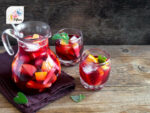






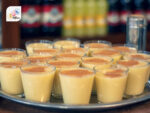
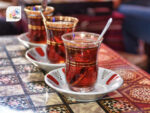
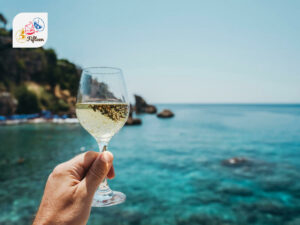
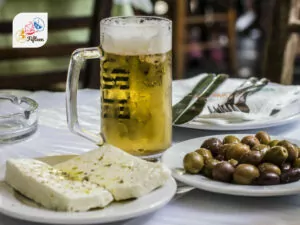


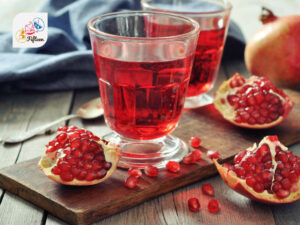
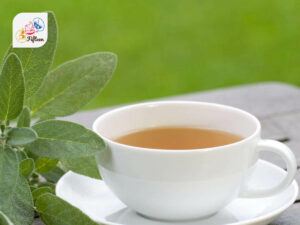
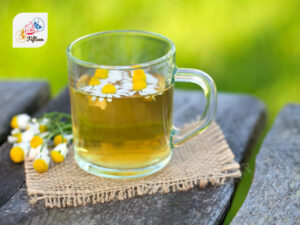
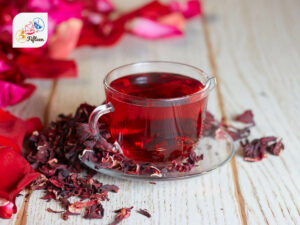
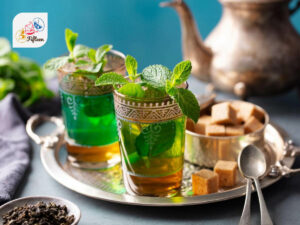

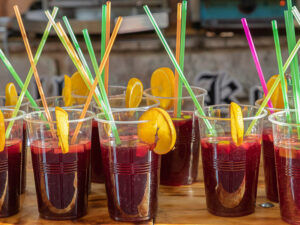
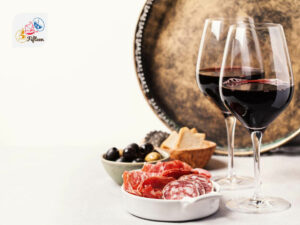
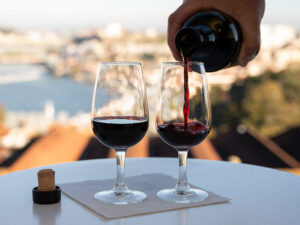
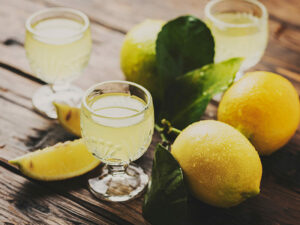
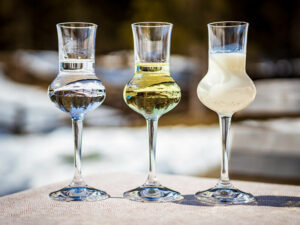
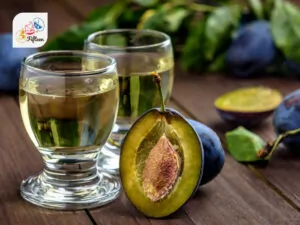
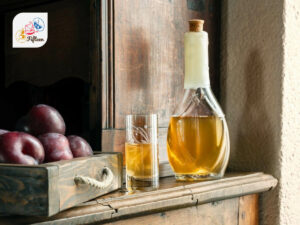
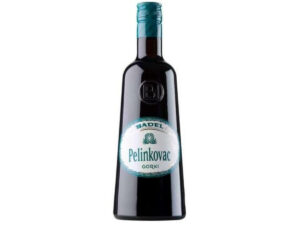
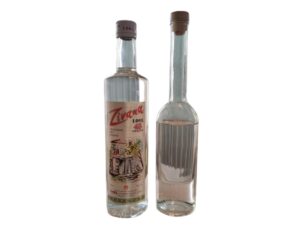
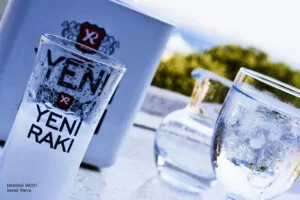
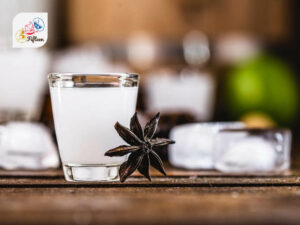
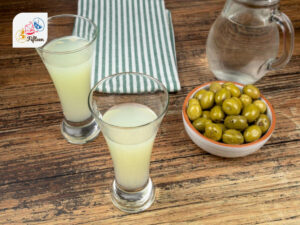
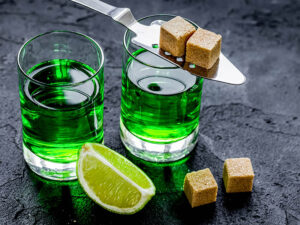

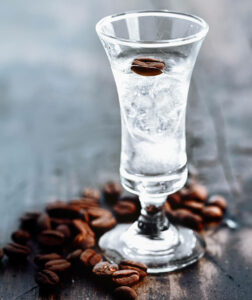
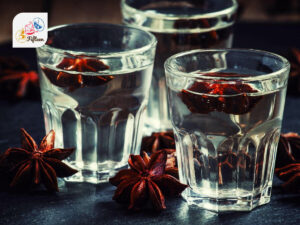

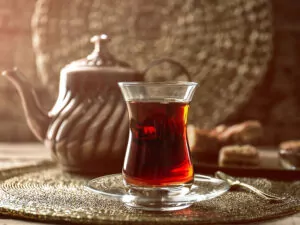
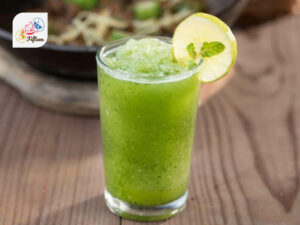
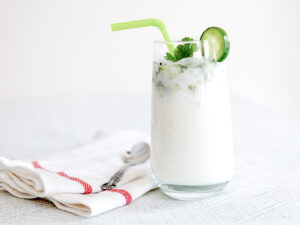
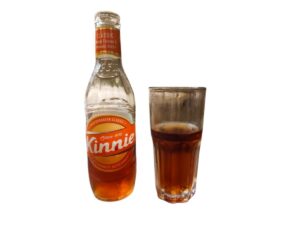
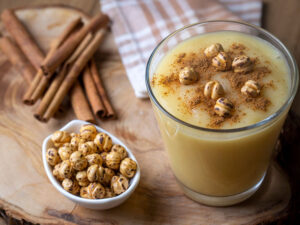
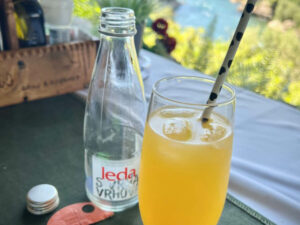
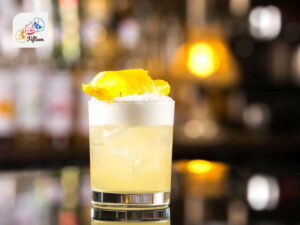
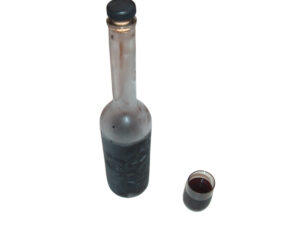
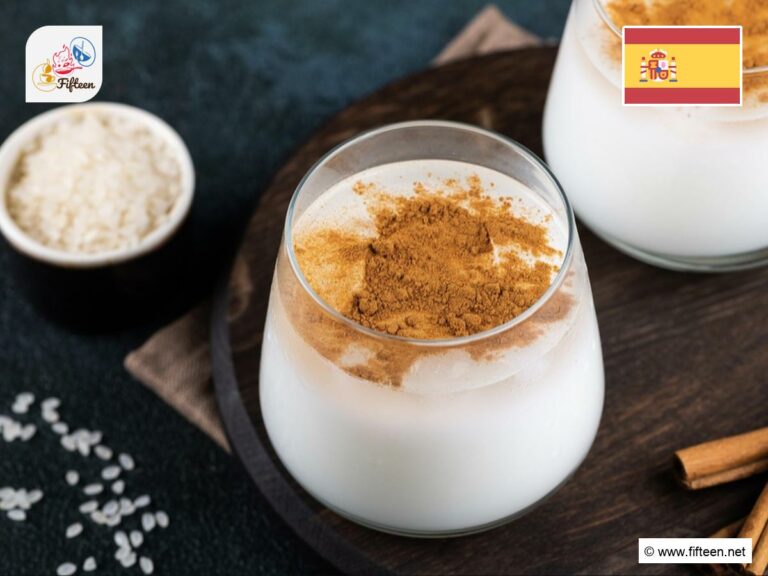
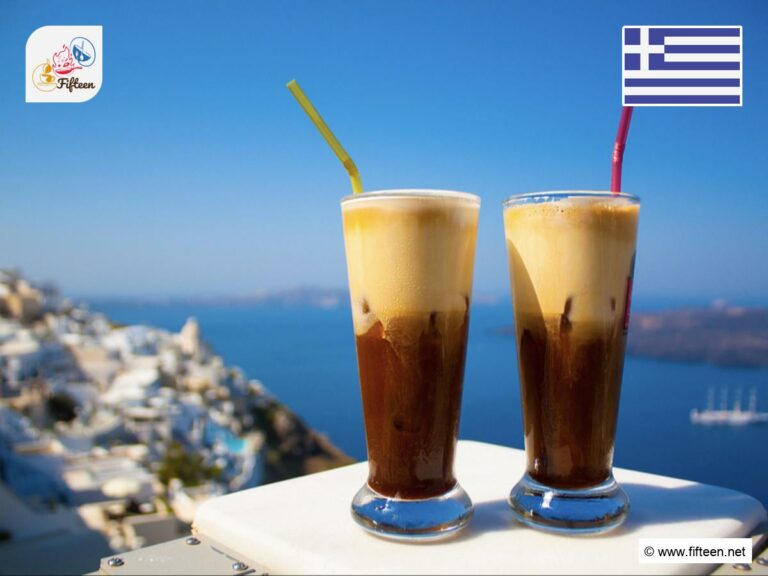
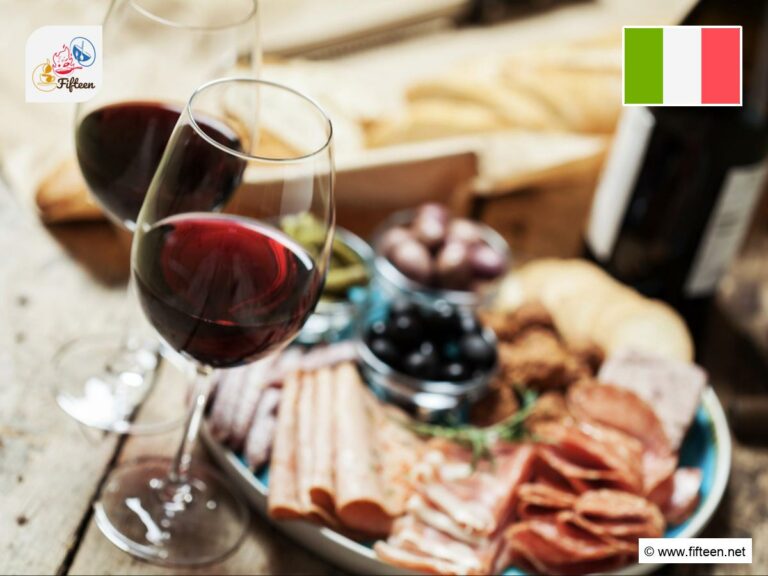
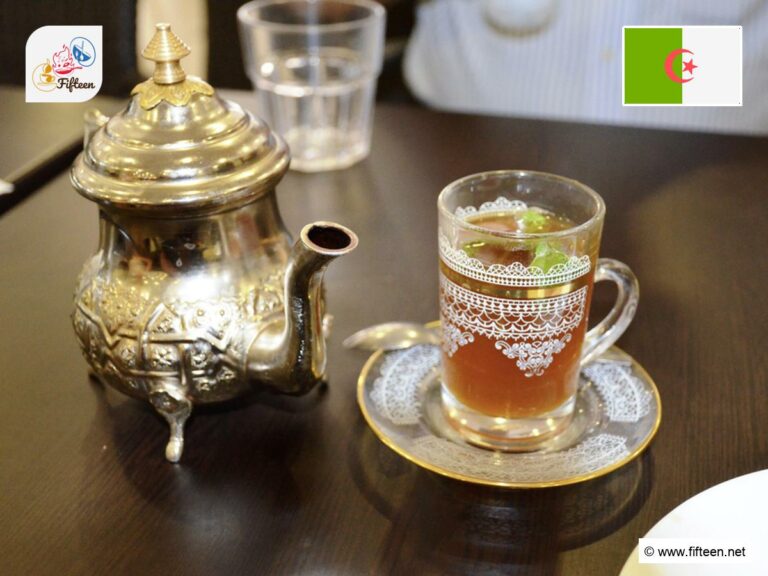

Jamie Scott
Editor in Chief, Senior Content Writer
Expertise
Home Cooking, Meal Planning, Recipe Development, Baking and Pastry, Food Editor, Cooking-video Maker, Western Food Evaluation Expert
Education
Le Cordon Bleu College of Culinary Arts
Local Community College, New York, NY
Jamie Scott is a skilled culinary expert and content creator specializing in Western cuisine. With over 15 years in the culinary field and formal training from Le Cordon Bleu, Paris, Jamie deeply understands how to blend nutrition with delicious flavors. His passion for cooking matches his commitment to making healthy eating accessible and enjoyable.
On Fifteen.net, Jamie brings a fresh perspective to classic dishes and beverages, offering readers insightful recipes, cooking tips, and a fresh view on meal planning that emphasizes taste, health, and simplicity.